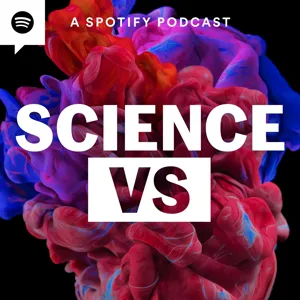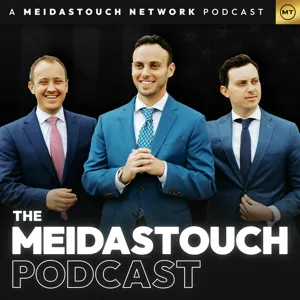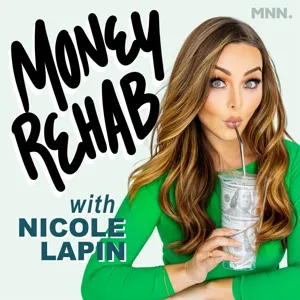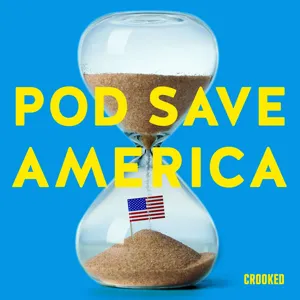Podcast Summary
A Wave of New Abortion Laws and the Future of Roe v Wade: New state laws restrict access to abortions, leading to more out-of-state travel and online purchases of abortion pills. The future of Roe v Wade, which legalized abortion nationwide, is uncertain as the Supreme Court considers a Mississippi law.
The United States is seeing a wave of new laws restricting access to abortions, with some states aiming for near-total bans. This trend, which includes laws in Oklahoma, Texas, Mississippi, and others, has led to an increase in people traveling out of state for the procedure and purchasing abortion pills online. The future of Roe v Wade, the landmark Supreme Court decision that legalized abortion nationwide, is uncertain as the Supreme Court is expected to make a decision on the Mississippi law. Meanwhile, a woman named Carol Downer, who lived before Roe v Wade, shares her story of performing self-induced abortions and creating a movement for reproductive rights. This episode explores her journey and the impact it had on the larger movement for reproductive justice.
Women's struggle for reproductive rights during the 1960s: Despite the risks and illegality, women bravely underwent dangerous abortions to assert control over their bodies and lives, paving the way for future reproductive rights.
Carole's experience during the 1960s highlights the struggles and risks women faced before the legalization of abortions. Carole, a mother of four, was already dealing with the demands of raising her children and marital issues when she became pregnant again. Despite the illegal status of abortions, she made the difficult decision to undergo the procedure. The experience was harrowing, from finding a provider to the actual procedure and the aftermath. The physical and emotional toll was significant, and Carole's ordeal was far from over when she was instructed to remove the gauze left in her vagina, which resulted in an agonizing extraction. Thousands of women went through similar experiences during this era, fueling the growing movement for women's reproductive rights and the eventual legalization of abortions. Carole's story serves as a powerful reminder of the courage and resilience of women who fought for control over their own bodies and lives.
Carole's transformative experience at the feminist meeting: Carole's observation of an underground abortion procedure inspired her to become an abortion apprentice and start a grassroots movement for self-performed abortions.
Carole's experience at the feminist meeting led her to question societal expectations of women and ignited a passion for fighting for reproductive rights. She was inspired by the idea that women could learn and perform medical procedures, such as abortions, among themselves. Initially, Carole lacked the necessary knowledge to perform an abortion but sought out an underground clinic to learn. Her first-hand observation of the procedure was a transformative moment, revealing the simplicity and accessibility of the process. Empowered by this discovery, Carole became an abortion apprentice and eventually recruited other women to join her cause. In the spring of 1971, Carole organized a gathering where she shared her knowledge with a group of women, marking the beginning of a grassroots movement for self-performed abortions.
First Look at Their Own Bodies: Carole Joffe's 'Speculum Parties': Carole Joffe's demonstration of a speculum during bookstore events in the 1960s allowed women to see their own bodies for the first time, empowering them to question and learn about their reproductive health, challenging the medical establishment's monopoly on knowledge.
During the 1960s, women's understanding of their own bodies was limited, leading to fear and misconceptions about reproductive health. Carole Joffe, a pioneering activist, recognized this and boldly demonstrated the use of a speculum during a bookstore event, allowing women to see their own bodies for the first time. This simple act led to a shift in mindset, empowering women to question and learn about their bodies, challenging the notion that doctors held all the knowledge. This experience inspired Carole to travel across the country, hosting "speculum parties" to educate women about their reproductive health, ultimately breaking down the taboo surrounding women's bodies and paving the way for greater sexual and reproductive autonomy.
Carol Downer's discovery led to women's health movement in late 1960s: Women's self help groups taught themselves about bodies, provided health services and illegal abortions, gaining momentum and empowering women through accurate info and self control.
Carol Downer's accidental discovery of women's anatomy during a bookstore presentation led to the formation of a women's health movement in the late 1960s and early 1970s. The self helpers, as they came to be known, taught themselves and other women about their bodies through hands-on workshops and clinics. They learned to perform pelvic exams, insert diaphragms, and even do abortions. The movement quickly gained momentum, with at least 50 self help groups forming across the country. The self helpers' goal was to empower women by providing them with accurate information and encouraging them to take control of their own health. While teaching women about their bodies, some self helpers also provided illegal abortions, using a safer technique they had learned. This double mission of education and reproductive health services made the self helpers a controversial yet influential force in the women's health movement.
Jane Collective: Providing Safe Abortions Before Roe v. Wade: Before Roe v. Wade, the Jane Collective in Chicago offered safe abortions using homemade methods, saving thousands of women from dangerous back-alley procedures.
During the 1960s and 1970s, a group of women's rights activists called the "Jane Collective" in Chicago, Illinois, provided illegal but safe abortions to thousands of women before Roe v. Wade legalized the procedure. They used a homemade abortion kit, which involved creating a vacuum in a mason jar and inserting a cannula into the uterus. This method, while unsettling to some, was considered safer than the dangerous alternatives available during that time, such as back-alley abortions or self-administered methods with harmful substances. Despite the risks, there's no evidence of serious complications from the Jane Collective's procedures. The group's actions were motivated by the reality of dangerous and often fatal back-alley abortions, which disproportionately affected low-income women.
Underground Abortions and the Women's Self-Help Clinic: Women's fight for reproductive rights led to the establishment of underground clinics providing abortions. Discovery by authorities resulted in arrests and confiscation of equipment, but public support and a high-profile trial brought recognition and inspired a larger movement.
The women's self-help clinic in Los Angeles, which provided underground abortions, went to great lengths to avoid detection by using code words and maintaining secrecy. However, they were eventually discovered by the police in early 1972. The raid on the clinic was devastating for the women involved, resulting in the confiscation of equipment and the arrest of some of the self-helpers. Despite the challenges, the women fought back, with public support from various quarters, including academics, doctors, and even a congresswoman. The trial became a turning point, with Carole and the self-helpers gaining recognition for their work and inspiring a larger movement for women's reproductive rights. The experience showed that by confronting their oppressors directly, women could challenge the status quo and make significant progress towards greater autonomy and control over their bodies.
The Great Yogurt Conspiracy: A landmark case for women's reproductive rights: Women's self-help groups pioneered safe, illegal abortions using menstrual extractions and yogurt, leading to a legal victory weeks before Roe v. Wade.
The self-help group's efforts to provide menstrual extractions as a means of safe and illegal abortions during a time when the procedure was not yet legal, led to a landmark case known as "The Great Yogurt Conspiracy." The trial focused on the legality of using yogurt as a tool for the procedure, and ultimately resulted in a not-guilty verdict. This victory came just weeks before the Roe v. Wade decision, which legalized abortions in the United States. The self-help group's determination and innovation did not stop there, as they later used the menstrual extraction kit to help Francie get pregnant. This story began with a woman's first-hand experience of seeing a cervix and ended with the birth of Francie's son. The journey showcases the lengths women went to in order to take control of their reproductive health before the availability of legal abortion.
Exploring the safety of abortions and fetal development milestones: This episode sheds light on the safety of abortions and debunks common misconceptions, while also discussing fetal development milestones like heartbeat and pain sensitivity.
The Science Versus Abortion episode, produced by Wendy Zuckerman and her team, provides essential facts about the safety of abortions and the developmental milestones of a fetus, including heartbeat and pain sensitivity. Additionally, listeners are encouraged to tune in to the Not Past It podcast next week for an episode about a top-secret 1955 abortion conference. This episode was meticulously produced, edited, and sound-designed by a team of professionals, with valuable contributions from numerous scientists and experts. A special thanks to all those involved, including Michelle Welsing and her team at Southern California Library, Dr. Becky Chalker, Jonathan Roberts, Jim Aspom, Odelia Rubin, Alice Kors, the Zuckerman family, and Joseph Lovell Wilson.






